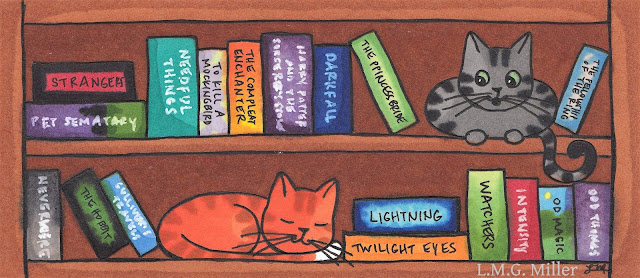Hello, friends! It's time for another letter in the April A to Z Challenge.
***
We're in the midst of tips regarding parasites and their prevention. We have so far covered heartworms, fleas, tapeworms, roundworms, hookworms, and whipworms. Now, today, it's all about those ear mites.
As is probably obvious, ear mites affect the ears, living primarily in the ear canal. For what it's worth, ear mites are more commonly seen in cats, making dogs the luckier, less typical victims of these buggers. Ear mites can be spread directly from cat to cat.
Now, what will you notice if your cat, or dog, has an ear mite infestation? Your furbaby's ears will itch, they will scratch at them, there can therefore be inflammation in the area, and they may even shake their heads or hold their ears low due to the irritation. You also may see dark, brownish debris in the ears, which is commonly described as resembling coffee grounds.
If you do see any of the above symptoms in your kitty or pup, have them seen by a veterinarian. Ear mites can ultimately lead to secondary ear infections and other similar issues, so taking care of them is of course best for your furbaby's health and happiness. Your veterinarian can test for ear mites by swabbing the ears and looking at the debris under a microscope.
When it comes to treatment, it is of course best to use medications prescribed directly by your veterinarian. There are drops or other treatments that can offer a relatively fast-acting eradication of the ear mites. In addition, there are monthly preventatives that cover ear mites. These can typically help take care of existing mites, as well as prevent a future ear mite infestation. Discuss any and all such options with your veterinarian, especially if your furbaby is largely outdoors and potentially more susceptible to such infestations.




4 comments:
You've included some of my favorite books in your doodle!
Great drawing and excellent tips.
This doodle is absolutely adorable!
Good books are a delight!
Post a Comment